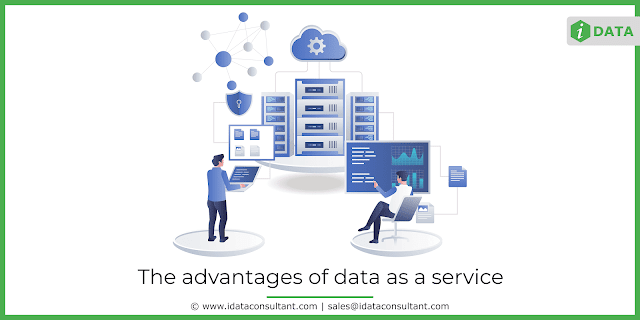Importance of Data Services | How Data Service Can Help Your Business
The overall concept of the DaaS model is to transfer the
risks and responsibilities of Data Management to a third-party Cloud-based
service. Historically, businesses were responsible for the storage and
management of their own data within their own independent storage systems. The
difficulty with the old model is that as the data gets more complicated,
maintaining it can become increasingly difficult and expensive.
To put it more succinctly, data-as-a-service (DaaS) is an
innovative approach to accessing mission-critical information housed in an
existing data center. Within the confines of the DaaS environment, information
may be transmitted to a user, notwithstanding the user’s location or the
organizational constraints that may exist. Applications for Customer Resource
Management (CRM) and Enterprise Resource Planning (ERP) are two of the most
frequent types of business applications that are powered by DaaS technology.
Why use DaaS?
Organizations that adopt DaaS as their principal delivery
mechanism for data-related processes have numerous benefits. By storing data in
a centralized infrastructure using DaaS, enterprises realize infrastructure
investment economies of scale. It also promotes the standardization of skill
sets to increase the efficiency of administration. In addition, it offers
greater options for data sharing across the firm, resulting in increased
collaboration and information exchange.
Let’s examine them in greater depth:
Quality of Data
Users obtain data via the data service. Since the data service
is the single update point, it is easier to trace changes to data, which can
improve data quality.
Agility
DaaS accelerates access to essential data by providing the
data in a flexible but straightforward manner. Users are able to take immediate
action without requiring a thorough understanding of where data is kept or how
it is indexed. The most essential benefit of DaaS is its agility, which helps
reduce time-to-market for DaaS consumers.
Monetary adaptability
DaaS (data-as-a-service) enables businesses to balance
investment and operating expenses. Using DaaS, businesses may launch new
services without investing in data management infrastructure or employees.
In addition, DaaS limits the capacity of source systems,
hence reducing licensing, MIPS, and hardware expenses. Additionally, DaaS helps
businesses reduce maintenance expenses.
Enhance a workflow
Typically, data-as-a-service models do not interrupt a core
process but rather enhance a workflow. Customer experience journeys and a
comprehensive awareness of industry requirements aid in delivering instant
value to the business.
Few clients request more dashboards. These data services
firms frequently employ a default design strategy to connect with the
end-routine users and a well-defined customer issue.
DaaS (data as a service) Patterns:
1. Self-Service Perspectives
Numerous new companies are going upstream in order to
specialize in data visualization, data-driven insights, and decision tools,
which they provide directly to business analysts and decision-makers. With the
advent of sensors in everything, businesses are also building data-driven
customer insights, such as golf clubs that teach you how to improve your game.
2. Automatic Insights
As insights travel upstream, the connectivity of everything
to everyone enables the tracking and optimization of processes that were
previously unseen. Everything that can be mechanized will be automated, and
analog and human processes will be replaced. Everything that can be digitized
will be digitized, and the adoption of data-driven organization design will
revolutionize every part of a company’s business model.
3. Comparing
Data as a service is a valuable tool for comparing the
performance of your firm to that of its peers. Using DaaS, businesses may gain
access to global data and generate benchmarking reports that may include
financial performance, turnover, and leadership effectiveness with percentile
breakdowns.
4. Business intelligence
Businesses can provide their data to internal users as a
service, hence facilitating business intelligence. DaaS streamlines data
standards by integrating diverse data sources, data virtualization, and
analytics automation. Data scientists have access to data in real time,
allowing them to dynamically conduct any required data transformations and
integrations and evaluate data for decision-making.



Comments
Post a Comment